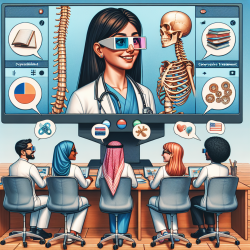The 12th International Conference on Conservative Management of Spinal Deformities (SOSORT 2015) held in Katowice, Poland, was a significant event for professionals dedicated to advancing treatment methodologies for spinal deformities such as scoliosis. This conference provided a platform for sharing groundbreaking research and innovative approaches to conservative management, which can greatly enhance practitioner skills and patient outcomes.
Key Research Highlights
The conference featured numerous studies that shed light on various aspects of scoliosis management. One notable study focused on the functional properties of paraspinal muscles in adolescents with idiopathic scoliosis (AIS). This systematic review highlighted the need for exercise-based interventions that are scientifically grounded in understanding muscle impairments associated with scoliosis. The research emphasized the importance of targeting specific muscle deficits to improve treatment efficacy.
Another significant presentation explored the role of trunk imbalance in AIS. The study demonstrated high test-retest reliability for measuring trunk imbalance using a plumbline and its correlation with radiographic measurements. This finding underscores the value of incorporating reliable clinical measures into regular practice to monitor and manage scoliosis effectively.
Implementing Research Findings
Practitioners can leverage these insights by integrating evidence-based exercises into treatment plans. For instance, focusing on exercises that address specific muscle deficits identified in the literature can enhance patient outcomes. Additionally, utilizing reliable clinical measures like trunk imbalance assessments can help track progress and adjust interventions as needed.
The conference also highlighted the potential of ultrasound imaging as a tool for assessing spinal flexibility during orthosis design. This method offers a radiation-free alternative for evaluating curve flexibility, which is crucial for designing effective orthotic devices. Practitioners should consider adopting such innovative technologies to enhance their diagnostic capabilities and improve patient care.
The Importance of Continued Research
The SOSORT 2015 conference underscored the necessity for ongoing research to refine conservative treatment approaches for spinal deformities. Practitioners are encouraged to stay informed about emerging studies and incorporate new evidence into their practice. Engaging in professional development opportunities such as conferences and webinars can facilitate this continuous learning process.
Moreover, collaboration with researchers and participation in clinical studies can contribute to advancing knowledge in this field. By staying at the forefront of research developments, practitioners can ensure they provide the most effective care for their patients.
Conclusion
The insights gained from the SOSORT 2015 conference offer valuable guidance for practitioners seeking to enhance their skills in managing spinal deformities. By implementing research findings into practice and remaining committed to ongoing education, professionals can significantly improve patient outcomes in scoliosis treatment.
To read the original research paper, please follow this link: 12th International Conference on Conservative Management of Spinal Deformities – SOSORT 2015 Annual Meeting.










